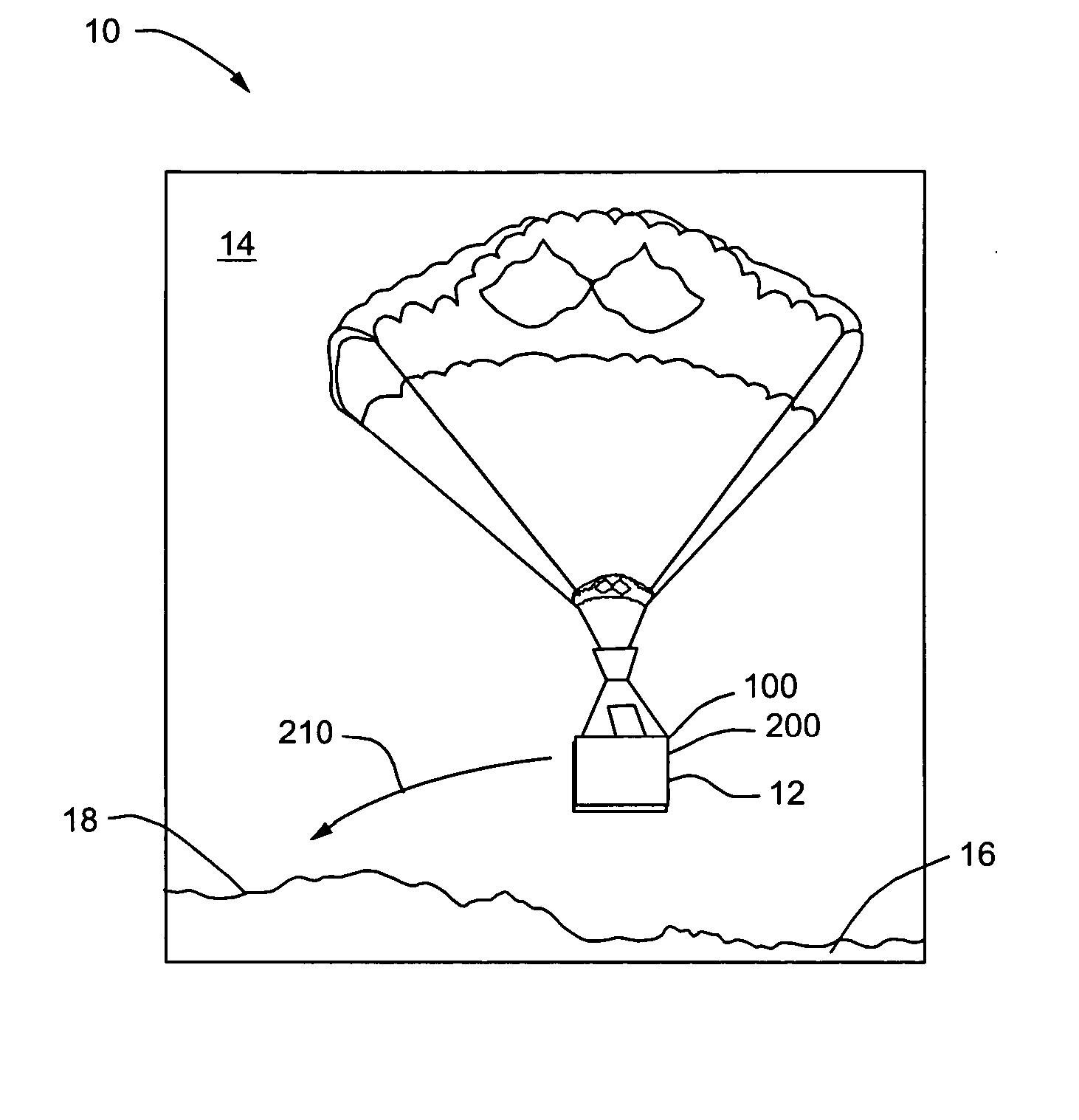Method and apparatuses for controlling high wing loaded parafoils
a parafoil and high-wing technology, applied in the field of parasail, can solve the problems of large and undesirable responses, high non-linear response to input control, spiraling descent, etc., and achieve the effect of removing noise and harmonic terms
- Summary
- Abstract
- Description
- Claims
- Application Information
AI Technical Summary
Benefits of technology
Problems solved by technology
Method used
Image
Examples
Embodiment Construction
[0029] According to one embodiment, the present invention features an adaptive guidance system 100, FIG. 1, used in conjunction with a stability augmentation system (SAS) to control a parasail 10. The function of the adaptive guidance system 100 is to regulate the altitude and heading of a parasail 10 in such a way that it arrives at the target site 18 at a prescribed altitude (very similar to the problem of landing an aircraft) and to provide heading rate commands to the SAS 200 for execution. The altitude profile (altitude versus range to the target site) depends both on wing loading, and wind magnitude and direction, both of which may be unknown at the outset. Accordingly, the purpose of adaptive guidance system 100 is to ascertain (estimate) the glide slope and wind conditions on the fly, and to provide a command to the SAS 200 that will result in attaining the desired glide slope and heading 210.
[0030] As will be explained in greater detail hereinbelow, the guidance system 100...
PUM
 Login to View More
Login to View More Abstract
Description
Claims
Application Information
 Login to View More
Login to View More - R&D
- Intellectual Property
- Life Sciences
- Materials
- Tech Scout
- Unparalleled Data Quality
- Higher Quality Content
- 60% Fewer Hallucinations
Browse by: Latest US Patents, China's latest patents, Technical Efficacy Thesaurus, Application Domain, Technology Topic, Popular Technical Reports.
© 2025 PatSnap. All rights reserved.Legal|Privacy policy|Modern Slavery Act Transparency Statement|Sitemap|About US| Contact US: help@patsnap.com



